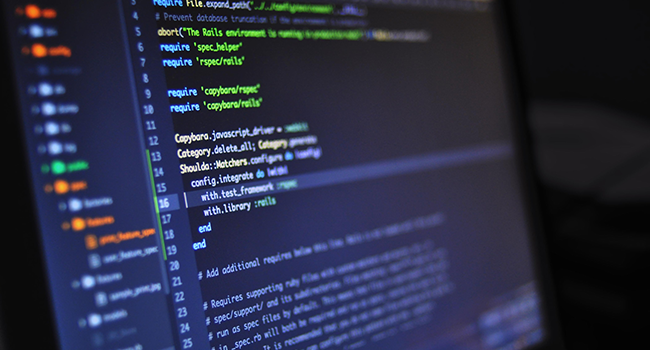Key takeaways:
- Understand the importance of Gen AI for cybersecurity
- Explore different ways how Gen AI is used in cybersecurity
- Discover real-time examples of Gen AI for cybersecurity
Enterprise cybersecurity is a high-stakes game where it is a challenge to mitigate evolving threats every day.
Gen AI offers a range of innovative solutions for professionals who must safeguard digital assets, data, and systems.
In this article, we mull over the role of AI in cybersecurity with generative AI at the center and take you through the spaces exploring the latest developments in cybersecurity AI.
Understanding Generative AI for Future Organizations
Generative AI is a subset of artificial intelligence that focuses on creating new content or data that mimics existing data. Unlike traditional AI models, designed to recognize patterns and make decisions based on input data, generative AI models can produce new and original outputs. These outputs can range from images and text to entire datasets. In the context of cybersecurity, generative AI can simulate cyberattacks, generate realistic phishing emails, and even create synthetic datasets for training purposes.
The Significance of Gen AI in Cybersecurity
The role of AI in cybersecurity has expanded significantly in recent years. AI-powered tools can now detect and respond to cyber threats with greater speed and accuracy than traditional methods. These tools use machine learning algorithms to analyze vast amounts of data, identify patterns, and detect anomalies that may indicate a security breach. AI in cybersecurity is particularly effective at identifying zero-day vulnerabilities—previously unknown security flaws that attackers can exploit.
The Significance of Generative AI Training Program For Cybersecurity
Generative AI takes the capabilities of traditional AI a step further by creating realistic simulations and scenarios that can be used to enhance cybersecurity measures. Here are some of the key ways generative AI training programs are being used in cybersecurity:
Threat Detection and Simulation- One
One of the most significant uses of AI in cybersecurity is threat detection. Generative AI models can simulate cyberattacks, allowing security teams to test their defenses against various scenarios. These simulations help organizations identify potential vulnerabilities and improve their response strategies before an attack occurs. By mimicking the tactics, techniques, and procedures (TTPs) used by cybercriminals, generative AI can provide valuable insights into how to strengthen security measures.
Automated Incident Response
Generative AI can also play a crucial role in automating incident response. In the event of a cybersecurity breach, time is of the essence. Generative AI models can quickly analyze the nature of the attack, predict its potential impact, and generate appropriate response actions. This reduces the time it takes to mitigate the attack and minimizes the damage caused. For example, generative AI can automatically generate and deploy patches to fix vulnerabilities as soon as they are detected.
Phishing Detection and Prevention
Phishing remains one of the most common methods cybercriminals use to gain unauthorized access to sensitive information. Generative AI can be used to create realistic phishing emails that are indistinguishable from genuine communications. Organizations can improve their ability to detect and prevent phishing attacks by training AI models on these synthetic phishing emails. Additionally, generative AI can be used to simulate phishing attacks as part of employee training programs, helping to raise awareness and reduce the likelihood of successful phishing attempts.
Boosting Threat Intelligence
Generative AI can generate vast amounts of synthetic data that can be used to train machine learning models. This is particularly useful in cybersecurity, where real-world threat data may be limited or difficult to obtain. Security teams can develop more effective threat intelligence models by using generative AI to create realistic threat data. These models can then be used to predict and prevent future cyberattacks.
Securing AI Models
As AI becomes more integrated into cybersecurity, the security of AI models becomes a concern. Generative AI can be used to test AI models for vulnerabilities and ensure they are resilient against adversarial attacks. This is important in specific scenarios where AI models make critical security decisions, such as in automated threat detection and response systems.
Gen AI in Cybersecurity: Real-Time Examples and Latest Developments
With new tech and emerging tools, the adoption rate of Gen AI for cybersecurity is rising. Organizations are better equipped to combat advanced threats with early detection options and effective planning. Here's a closer look at some of the real-time instances where Gen AI in cybersecurity has made an impact.
IBM Watson
IBM Watson is a cognitive computing platform that uses AI to analyze and interpret vast amounts of data. In cybersecurity, Watson can identify patterns in security logs and detect potential threats that would be difficult for human analysts to spot. Watson's ability to process and analyze large datasets in real time makes it a valuable tool for threat detection and response.
Darktrace
Darktrace is a cybersecurity company that uses AI to detect and respond to cyber threats in real time. Its AI system, the "Enterprise Immune System," mimics the human immune system by learning what is normal for an organization's network and identifying deviations that may indicate a threat. Darktrace's generative AI capabilities allow it to simulate potential threats and test the effectiveness of security measures.
OpenAI's GPT-3
OpenAI's GPT-3 is one of the most advanced generative AI models currently available. While it is primarily known for its ability to generate human-like text, it can also be used in cybersecurity to create realistic phishing emails. By training on these synthetic emails, security systems can improve their detection and prevention capabilities, making it more difficult for cybercriminals to succeed.
Google's AutoML
Google's AutoML is a machine learning platform that allows users to build custom AI models with minimal coding. In cybersecurity, AutoML can be used to develop threat detection models tailored to an organization's specific needs. By leveraging generative AI, AutoML can create synthetic datasets to train these models, enhancing their accuracy and effectiveness.
The Future of AI in Cybersecurity
The future of AI in cybersecurity is promising, with generative AI set to play an increasingly important role. As cyber threats evolve, AI-powered tools will become essential for identifying, preventing, and responding to attacks. AI in cybersecurity will also expand beyond threat detection to include fraud prevention, identity verification, and secure communications.
However, the need for skilled professionals who understand AI and cybersecurity will grow as AI becomes more integrated into cybersecurity. This is where StackRoute comes into play. StackRoute is a B2B Gen AI training provider that helps organizations upskill their workforce in AI and cybersecurity. By partnering with StackRoute, organizations can ensure that their teams are equipped with the knowledge and skills to leverage AI in cybersecurity effectively.








